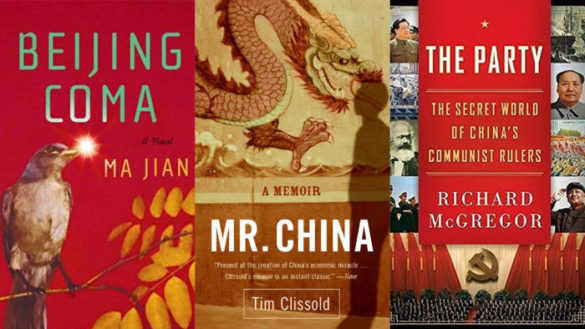
Five books that explain how the Tiananmen protests shaped China
By James Kynge
As a young reporter, I witnessed the massacre of protesters in central Beijing in 1989. I’ve often thought about what the weeks of pro-democracy demonstrations in cities all over China and the subsequent crackdown mean in the context of the country’s current reality and its historical quest for modernity.
In one sense, China appears to have moved on impressively. It is now an economic superpower, having raised more than 850 million people from poverty since the early 1980s. In another sense, its autocratic but capitalist system is a direct descendant of that forged in the months after the massacre. So too is the anti-western orientation of a government that is increasingly at odds with the US. The significance of Tiananmen Square 1989 has not diminished with the passage of time. Rather, those days provide the most poignant window through which to view the complexities of China’s presence in the world today.
Here are five books that explain how Tiananmen shaped today’s China:
- The Search for Modern China by Jonathan Spence. Few, if any, countries are as self-referential as China. The narrative that the Chinese have with themselves is informed mainly by domestic antecedents that echo through thousands of years of history rather than through global trends and foreign ideas. That is why this book, written by a giant of Sinology, is the place to start any journey toward understanding. China’s turbulent transformation from bureaucratic empire to modern nation-state remains unfinished business, even though it is already several hundred years old.
- Beijing Coma by Ma Jian. This book is fiction but, to me, it represents one of the most accurate depictions of Tiananmen. It evokes the humour and naivety, the love and sex, the young hopes, the paradoxes and the sheer haphazard humanity of those times. The author, a Chinese man who lives in the UK, participated in the demonstrations. By using a subtle yet insistent metaphor that runs through the book, Ma describes the “coma” in Chinese political life that stifles people’s aspirations for political reform and human rights.
- Mr China by Tim Clissold. This book does more than any other, in my view, to describe the clash between the ambitions of foreign business people and the fabled “China market” in the 1990s and early 2000s. Clissold captures the epic, often confrontational, nature of the deals he was personally involved with and how several of them went south. The humour that ensues makes this book a minor classic.
- The Party: The Secret World of China’s Communist Rulers by Richard McGregor. My former colleague at the Financial Times in China wrote this essential, riveting guide to how China’s power really works. Beijing does everything possible to obscure the workings of its political system both from its own people and from foreigners. The result has been that western countries are often at a loss to know how decisions are made and what informs them. The book draws on insider stories from scores of Chinese interviewed over several years.
- The Hundred Year Marathon by Michael Pillsbury. If you need to understand how and why US policy toward China has turned inexorably conservative in the past few years, this is the book to read. Pillsbury is a China watcher with 40 years of experience and ties to the CIA, FBI and Pentagon. His central thesis is that the hawks in China have persuaded the Chinese leadership that the US is a dangerous rival that must be countered. Whether or not you buy this analysis, it is key to recognising the current clash of superpowers.
James Kynge is the FT’s global China editor and author of China Shakes the World. He has covered the country for more than 30 years.
Source: https://www.ft.com/content/11fed638-86b5-11e9-a028-86cea8523dc2?segmentid=acee4131-99c2-09d3-a635-873e61754ec6